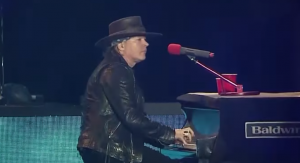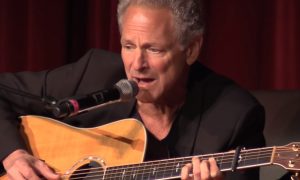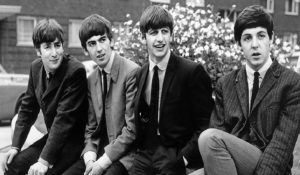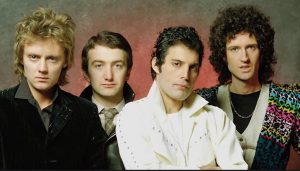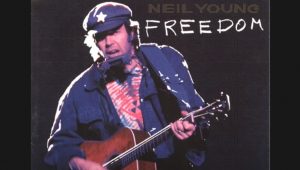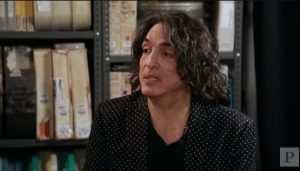Inside Gene Simmons’ List Of Favorite Songs

Simmons in KISS regalia - @genesimmons / Instagram
Gene Simmons and Paul Stanley have worked together to write many songs for KISS during the band’s 50-year history. This collaboration began with the band’s 1974 self-titled debut and continued until their 20th and last album, Monster, which hit the shelves in 2012.
Beyond their collaborative efforts on KISS’s catalog, which features hits like “Rock and Roll All Nite”, “Strutter”, and “Shout It Out Loud”, Simmons has penned numerous songs on his own, including “Deuce” and “Calling Dr. Love”. Additionally, he co-wrote songs for the late Wendy O. Williams of the Plasmatics and put out two solo albums, Gene Simmons in 1978 and Asshole in 2004.
Through the course of his career, The Demon has shown a more varied taste in music, going beyond the flashy stage acts and theatrical elements commonly associated with KISS. He revealed some of his favorite songs in 2014 when hosting the radio program Celebrity Shuffle.
He cited songs by Barry White, Jackie Wilson, and the Australian rock group The Easybeats from the 1960s, among other musicians. Interestingly, in addition to KISS, you can also find Van Halen and Toad the Wet Sprocket in his eclectic playlist.
“Sleep Walk”, Santo & Johnny (1959)
Written and recorded by the Brooklyn, New York-based sibling rockers Santo & Johnny (Santo and Johnny Farina), “Sleep Walk”, is a rock instrumental that made history in 1959 by debuting at No. 1 on the Billboard Hot 100 and at #4 on the R&B chart. The brothers’ uncle contributed to the familial bond by playing the drums for this well-known composition.
Simmons thought back to the unique musical environment of the early 1960s when radio was figuring out how to incorporate rock & roll, still in its nascent stage. “Every once in a while you would hear very bizarre instrumentals by groups that would only come for one song, like The Tornados,” he recalled.
Simmons emphasized the era’s adaptability by pointing out that KISS also dabbled in instrumental music in the 1970s with their own composition, “Love Theme from Kiss”, which was included on their self-titled first album in 1974.
“But one of the unique songs of all time was this kind of Latin-flavored sleepy Hawaiian guitar by two guys (Santo & Johnny) who up until then had had no success whatsoever but immediately it grabs you,” the bassist shared.
“Baby Workout”, Jackie Wilson (1963)
One of the biggest hits of R&B singer Jackie Wilson’s career was “Baby Workout”, a song from the album of the same name that was released in 1963. The song peaked at number one on the R&B chart and at number five on the Hot 100.
Wilson was one of the leading models for lead singers, and Simmons recognized him as a significant influence. Simmons claims that Jackie Wilson had such a strong influence that songs were written specifically in his honor.
“He was a guy that was very acrobatic, he could do splits, jump up way before guys like James Brown came across and started doing that stuff,” Simmons commented.
The KISS Bassist went on and imparted that Wilson, who grew up in a religious home, combined large band sound and pure pop components to create a distinctive musical combination. In 1987, the R&B singer was posthumously inducted into the Rock & Roll Hall of Fame as a tribute to his enduring influence.
“Concrete and Clay”, Unit 4 + 2 (1965)
Written by Brian Parker and Tommy Moeller, the song “Concrete and Clay” became a major hit for the British pop six-piece in the middle of the 1960s. This song reached No. 35 on the Hot 100 and the coveted No. 1 spot on the UK Singles chart. It also did fairly well in the Top 40.
The band only released two albums, 1st Album in 1965 and Unit 4 + 2 in 1969, and their short existence ended after Unit 4 + 2 broke up in 1970.
Simmons claims that Unit 4 + 2 made a unique impact on the music world with their broad influences, which included cha-cha rhythms, South American beats with jazz overtones, and Bossa Nova. “[There were] very ‘Beatle-esque’ melodies against a portal structure that defies logic,” he added.
During their brief but significant career, the band made a significant impact because of their unique blend of genres and adventurous use of sound.
“Friday On My Mind”, The Easybeats (1966)
The lyrics “Monday mornin’ feels so bad / Ev’rybody seems to nag me / Comin’ Tuesday I feel better / Even my old man looks good” are found in the 1966 hit song “Friday On My Mind” by the Easybeats, who were known for their 1965 hit song “She’s So Fine”.
George Young and Harry Vanda wrote the song, which became an international hit. This song not only became the first rock song from Australia to be known worldwide, but it also rose to an astounding sixth spot on the Hot 100.
Thinking back on the influence of “Friday On My Mind”, Simmons recounted his first listen to the song and said he had no idea it would eventually become associated with AC/DC. The pair, Vanda and Young, the band’s guitarist and lyricist, later produced the first string of AC/DC albums (Angus and Malcolm Young were George’s younger brothers).
“But the Easybeats had this crazy song that quarterly eludes me—certainly not blues-based, these licks. Then right before the chorus, the chords move the way notes move. If you try to play those notes they’re hectic. Try playing at his chords,” Simmons illustrated.
“Love’s Theme”, Barry White and Love Unlimited Orchestra (1974)
Simmons revealed that the late Barry White had a song that his wife Shannon Tweed loved. Despite being a performer of considerable girth, White, at the height of his popularity, captivated audiences—particularly women—with his charismatic voice reminiscent of a smooth phone sex operator, as Simmons humorously described: “‘Yeah baby, you know you want it.'”
Although White didn’t necessarily sing the songs in the usual sense, Simmons emphasized that White invented a genre of music that before rap—an intimate, sensuous sound that Simmons referred to as the “Oh yeah, come to daddy” kind of music.
“He produced his own records, often wrote his own tunes, and actually got up like Jackie Gleason—but that’s another story—and was a maestro,” the bassist emphasized.
White’s musical path included conducting The Love Unlimited Orchestra, a 40-piece orchestra, from 1972 until 1983. Following that, he concentrated more on his solo endeavors.
“Magic”, Pilot (1974)
In 1974, the Scottish pop group Pilot released their first hit, “Magic”, onto the music scene. Significant success was had by this song, which peaked at No. 11 in the UK and No. 5 on the Billboard Hot 100. Composed by members David Paton and Billy Lyall, “Magic” became the title track of the band’s debut record, From the Album of the Same Name.
Pilot’s “Magic” is a standout treasure from the middle era of English music, according to Simmons. The band rose to prominence with a well-regarded record and then appeared to vanish from the scene.
Simmon shared, “This song “Magic” combines all the best things of English pop music—great songwriting, terrific production by Alan Parsons.” Parsons would later form a more popular band called Alan Parson Project, while the song’s engineer Mike Stone would go on to work with KISS and Paul Stanley on a number of projects.
Pilot paid homage to their past in music in 2021 when they released The Magic EP, a collection featured four re-recorded songs, including the iconic “Magic”, along with “Over the Moon”, “Just a Smile”, and “January”,
“Goin’ Blind”, KISS (1974)
Gene Simmons named “Goin’ Blind”, from KISS’s second album, Hotter Than Hell, as his personal favorite song out of the enormous history of KISS tracks.
The lyrics of this explicit song, “And I know how it should be / There is nothing more for you and I / Some are young and some are free / But I think I’m goin’ blind”, tell the story of a 93-year-old man caught up in an unexpected affair with a much younger woman.
When Simmons thought back on the song “Goin’ Blind,” he said that he worked on it with Stephen Parnell, a friend from school, at a period when he wasn’t very concerned about the lyrics.
The bassist acknowledged that the song’s origins are rather enigmatic and that he is unsure of the motivation behind writing a story with the title “I think I’m going blind”, but he did remember thinking the idea was extremely romantic.
“It was about an old guy; I remember a movie called Hemingway‘s The Old Man and The Sea, and my vision of that was the old man and a mermaid,” Simmons recalled.
“Running with the Devil”, Van Halen (1978)
“Running with the Devil”, the second single from Van Halen’s self-titled first album, is a song that has stuck in Simmons’ memory since its early release. When Van Halen was still in his early years, Simmons actually saw them play at the Starwood Club in Los Angeles, California.
After seeing the band perform, Simmons was so impressed that he signed them to his production firm, decided to produce them, and set up a recording session for them in New York City. Remembering that first meeting, Simmons said Van Halen was the opening act for the main attraction, playing in a regular bar.
Resolved to steer their career path, Simmons persuaded David Lee Roth, Eddie Van Halen, and Alex Van Halen behind closed doors that it might not be the best idea to sign with a representative of the yogurt manufacturing industry. Rather, he suggested that they take a plane to New York and record their demo at Electric Lady Studios, and the budding rockstars agreed to this plan.
Simmons detailed, “I worked with the band trying to figure out what arrangement worked, what didn’t, and we picked 15 songs, and they were recorded on a 24-track, and this was their demo.”
“Rock and Roll All Nite”, Toad the Wet Sprocket (1994)
Now, this one’s quite a surprise. Although Toad the Wet Sprocket’s version of the band’s iconic 1975 song “Rock and Roll All Nite” is technically a KISS song, Gene Simmons said he preferred it.
The alternative rockers’ cover was included on the 1994 tribute album KISS My Ass: Classic KISS Regrooved, which featured a variety of artists covering KISS songs, including Lenny Kravitz, Garth Brooks, The Lemonheads, Gin Blossoms, and more.
“I put together a KISS tribute album because I didn’t wanna wait for anybody else to do it,” Simmons said, reflecting on the making of the tribute album. After reaching out to a number of artists, Toad the Wet Sprocket decided to take on “Rock and Roll All Nite,” and they were notably given complete creative freedom with the song.
Simmons regarded the result as an intriguing metamorphosis, in which Toad the Wet Sprocket modified the drum rhythm and added a unique section before the chorus. Simmons made a comparison despite these modifications, saying that the cover made him think of Jackson Browne.




